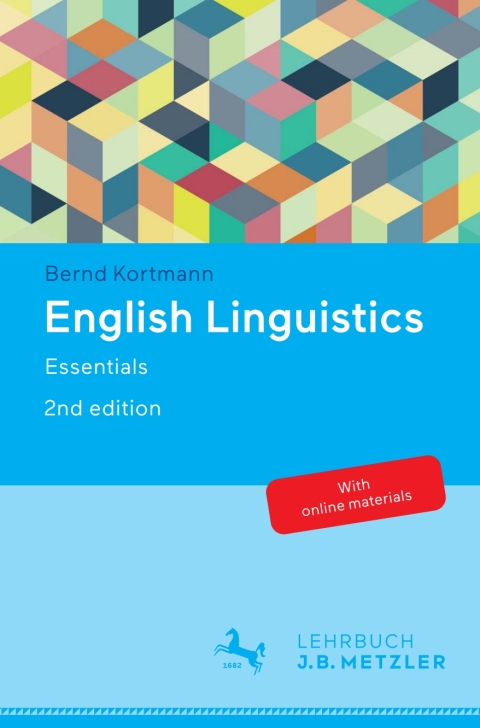Description
Efnisyfirlit
- Contents
- Preface
- 1 Linguistics: Major concepts and research traditions
- 1.1 | Setting the scene
- 1.2 | Central dichotomies
- 1.3 | Three major research traditions in 20th century linguistics
- 1.3.1 | Structuralism
- 1.3.2 | Formalism / Generative linguistics
- 1.3.3 | Functionalism
- Exercises
- Sources and further reading
- 2 Phonetics and phonology: On sounds and sound systems
- 2.1 | Phonetics
- 2.1.1 | Transcription
- 2.1.2 | Speech organs
- 2.1.3 | Types of sounds
- 2.1.3.1 | Consonants
- 2.1.3.2 | Vowels
- 2.2 | Phonology
- 2.2.1 | On determining the phoneme inventory: Segmental phonology
- 2.2.2 | Prosody: Supra-segmental phonology
- 2.2.3 | Phonological processes in connected speech
- Exercises
- Sources and further reading
- 3 Morphology: On the structure and formation of words
- 3.1 | Types of morphemes
- 3.2 | Morphophonemics: Interface of morphology and phonology
- 3.3 | Word formation processes
- 3.3.1 | Derivation
- 3.3.2 | Compounding
- 3.3.3 | Conversion
- 3.3.4 | Shortenings
- Exercises
- Sources and further reading
- 4 Grammar: The ground plan of English
- 4.1 | Inflectional morphology
- 4.2 | Syntax: Building blocks and sentence patterns
- 4.2.1 | Parts of speech
- 4.2.2 | Phrases and clauses
- 4.2.3 | Grammatical relations
- 4.3 | The English verb phrase
- 4.3.1 | Verb types
- 4.3.2 | Tense
- 4.3.3 | Aspect
- Exercises
- Sources and further reading
- 5 Contrastive Linguistics: English and German
- 5.1 | Contrastive Linguistics
- 5.2 | The most striking grammatical differences between English and German
- 5.2.1 | Morphology
- 5.2.2 | Word order
- 5.2.3 | Form-function mappings
- 5.2.4 | Further differences in the verb phrase
- 5.3 | Phonological differences
- Exercises
- Sources and further reading
- 6 Semantics: Word and sentence meaning
- 6.1 | Branches and boundaries of semantics
- 6.2 | Types and facets of meaning
- 6.3 | Structural semantics: Meaning structures in the vocabulary
- 6.3.1 | Lexical fields
- 6.3.2 | Sense relations
- 6.3.3 | Lexical ambiguity: Polysemy and homonymy
- 6.4 | Cognitive semantics: Prototypes and metaphors
- 6.4.1 | Prototypes
- 6.4.2 | Metaphors
- Exercises
- Sources and further reading
- 7 Pragmatics: The study of meaning in context
- 7.1 | Competing definitions: Perspective or component?
- 7.2 | Deixis
- 7.3 | Speech acts
- 7.3.1 | Classification of illocutionary acts
- 7.3.2 | Felicity conditions
- 7.3.3 | Indirect speech acts
- 7.4 | Conversational implicatures
- 7.4.1 | The original theory by Grice
- 7.4.2 | Post-Gricean models
- Exercises
- Sources and further reading
- 8 Sociolinguistics: Regional and social varieties of English
- 8.1 | Different types of varieties
- 8.2 | British and American English: A comparison
- 8.3 | Regional varieties
- 8.3.1 | Traditional and modern dialectology
- 8.3.2 | Syntactic variation in the British Isles
- 8.4 | Social varieties
- 8.5 | Feminist linguistics
- 8.6 | Sociolinguistics and language change
- Exercises
- Sources and further reading
- 9 Turns and trends in 21st century linguistics
- 9.1 | The quantitative turn
- 9.1.1 | Corpus linguistics
- 9.2 | The usage-based turn
- 9.2.1 | Usage-based linguistics
- 9.2.2 | The construction(al)ist turn: Construction Grammar
- 9.3 | The typological turn in World Englishes research
- 9.3.1 | Typological profiles across the anglophone world
- 9.3.2 | Angloversals, varioversals, areoversals
- 9.3.3 | Generalizations from a typological perspective
- 9.4 | The historical turn
- Exercises
- Sources and further reading
- 10 General reference works
- 11 Online resources and appetizers
- 12 Index







Reviews
There are no reviews yet.